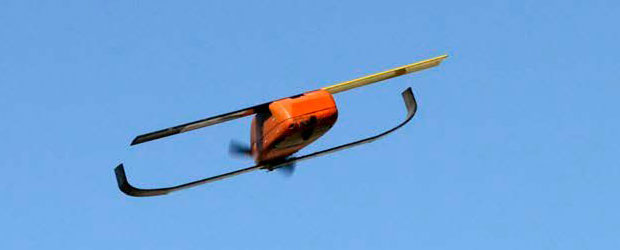The United States Department of Defense on Monday announced a successful demonstration of one of the world’s largest micro drone swarms at China Lake in California.
Three F/a-18 Super Hornet combat jets launched 103 Perdix drones in the exercise, which took place last fall.
The micro drones demonstrated advanced swarm behaviors such as collective decision making, adaptive formation flying and self-healing.
The Massachusetts Institute of Technology’s Lincoln Laboratory debuted Perdix in 2013. Since then, the DoD’s Strategic Capabiities Office has upgraded the technology using commercial components, 3D printing and agile manufacturing.
The DoD demo, which employed sixth-generation Perdix micro drones, confirmed that the their commercial components were reliable under a variety of potential deployment conditions — that is, speeds of Mach 0.6, temperatures of -10 degrees Celsius and large shocks.
Perdix is one of the first examples of the DoD using teams of small, inexpensive autonomous systems to perform missions previously conducted with large expensive systems.
Perdix fits into the DoD’s concept of future battle network scenarios in which autonomous systems allow humans to make better decisions more rapidly.
Sting Like a Bee
Perdix autonomous micro drones can be launched in the air, at sea, or on the ground. They can operate in small or large numbers.
Once launched, the micro drones gain situational awareness and locate other micro drones to create a swarm.
The drones run on AA batteries. They are 6.5 inches long and have a wingspan of 11.8 inches. They have propellers 2.6-inch propellers. They weigh 290 gm, fly at 40 to 60 knots, and can stay airborne for 20 minutes.
More than 670 Perdix micro drones have flown since the system’s first test two years ago.
Perdix’s Brain
Perdix micro drones share one distributed brain for decision-making and adapting to each other. They collaborate through communications.
“This is called swarm robotics,” noted Philip Solis, a research director at ABI Research.
Perdix operators set a mission, and Perdix decides how best to carry it out. Because the system cannot change its mission, operators can predict the swarm’s behavior without micromanaging.
Swarms have communication, cooperation and coordination capabilities, noted Mike Blades, a senior industry analyst at Frost & Sullivan.
Communication is the foundation that allows the passing of information. Cooperation is the next step — information sharing throughout a swarm. Coordination involves using that shared information to make autonomous or semi-autonomous decisions for all or part of the swarm.
For example, the swarm must decide whether a drone that’s been destroyed is expendable or needs to be replaced, and “this is where much of the testing of algorithms, communication and processing is going on now,” Blades told TechNewsWorld. Gradual increases in swarm sizes also are being tested.
Potential Uses
Perdix can be deployed for low-altitude missions such as surveillance and reconnaissance.
The system is now best for intelligence gathering, suggested Rob Enderle, principal analyst at the Enderle Group.
Each drone could be specialized and redundant, and the system’s collective mind spread over an area “could provide an unprecedented level of information and be very hard to block,” he told TechNewsWorld.
“Eventually, you can attack multiple targets while gathering intelligence,” said Frost’s Blades, “and do so while overwhelming the enemy’s defense capabilities.”
The drones also could use artifical intelligence to alter attack routes or surveillance operations based on changing conditions communicated by other drones in the swarm, he speculated.
Still, drones “can be jammed or taken over under the right circustances,” Blades noted, which could lead to a “mini arms race.”
There are commercial uses for mini-drone swarms, Enderle said, noting that Disney is using them in some of its parks.
“This may be an option for unique Christmas lights in a few years,” he remarked, “a thought that likely keeps the FAA up at night.”























































